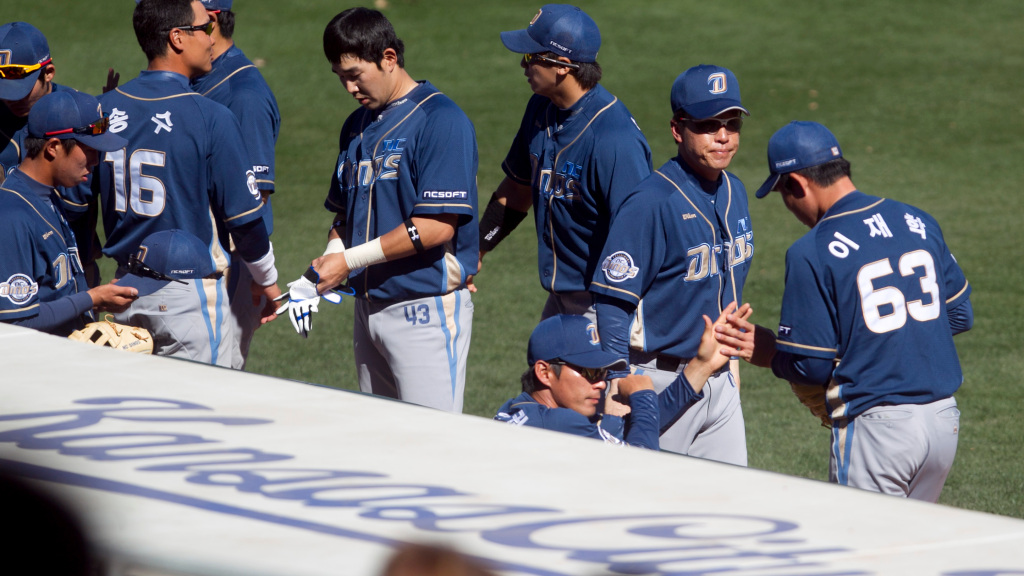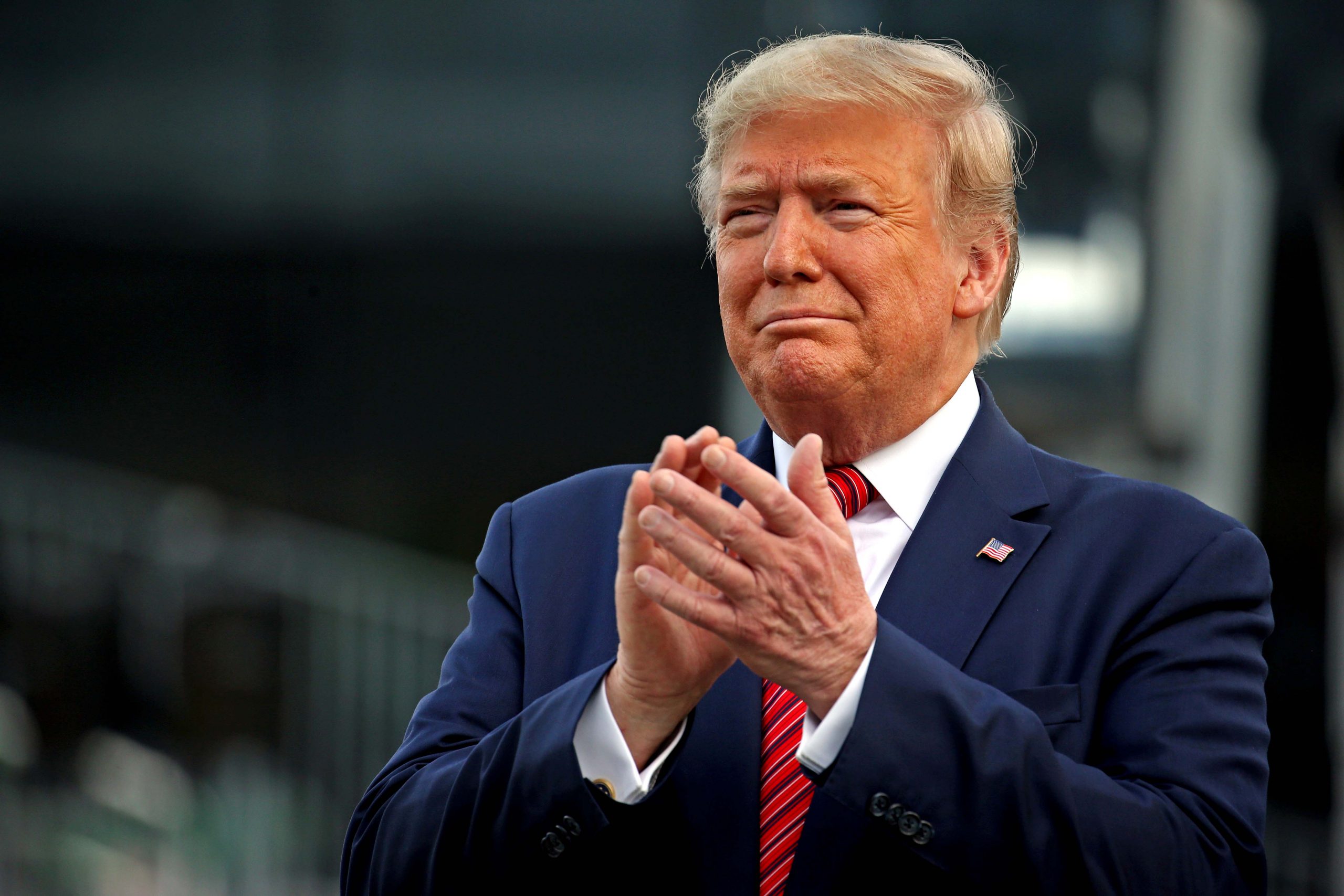As we’ve sat in our houses for two months holding our breath, picking up new hobbies, and incessantly scrolling through social media, it has become clear that we are all running out of things to do.
We have endured the longest two-month period of our lives and, since Week 1 of lockdown, one of the most common statements is: “This would be so much easier if we had sports.” Well look no further, ladies and gentlemen, live sports are finally back: the Korean Baseball Organization (KBO) just had their opening day on Tuesday morning at 1:00 a.m. EST.
Look, I know what some of you are thinking: “I don’t even like watching baseball in America, why would I want to watch baseball played in Korea?”
First of all, there’s not much else to do. We are suffering from a complete lack of stimulus in our lives. The element of spontaneity and surprise is completely gone. Perhaps the biggest wonder of the quarantine-era is what we will find when we open our fridges, though we sort of always know what’s inside––at least you’ll have the opportunity to be surprised by something.
Second, Korean baseball is fun to watch– more so fun than Major League Baseball in some ways. Sure, the players might not be as talented as their MLB counterparts, but the overall product certainly isn’t bad. Some compare the level of play to about Single-A level, but after watching one game, it seems the players are more refined than that.
It might not be fair to compare them to Double-A players, because they’re filled with unhinged flamethrowers—and most Korean pitchers seem to top high-80s to low-90s—but they still present as less “developmental” than some Double-A players.
The Korean style of play is a bit behind the MLB in terms of analytics (launch angles, spin rates, etc), but some teams such as the NC Dino’s are beginning to adopt a more forward-thinking baseball approach. From an offensive standpoint, plenty of players certainly have power, but there is still an emphasis on a more contact-hitting approach, as the KBO league-average for slugging percentage was .385 in 2019 against the .435 posted by the MLB.
Hitters are more patient, make contact more often than MLB players, and they are not afraid to slap a low-liner through the hole with two strikes. There is also presumably a greater emphasis on small-ball.
What was noticeable, however, was that outfielders play much deeper—pretty close to the warning track—in the KBO. This, combined with the fact that the KBO recently “de-juiced” their baseballs, means that there are fewer extra-base hits, but there were still a fair amount of home runs in the game I watched.
The fielding was noticeably less smooth than the MLB level, but the infielders had surprisingly good arms and made most of their plays.
The pitching was the most surprising to me because, after seeing how revered Blue Jays ace Hyun-Jin Ryu was, I expected the pitching style of the league to somewhat mimic his pitching strategy. While similarly to Ryu, the Korean pitchers hovered around 89 miles-per-hour (give or take a few ticks both ways), Ryu is a pinpoint precision pitcher who makes a living off of hitting his spots.
Most pitchers that I saw in the KBO, on the other hand, seemed to throw with a lot of movement, and therefore less accurate. One pitcher seemed to throw a cutter and a slider almost every pitch, and every other pitcher seemed to throw with—slightly uncontrollable—arm-side run. In the MLB, Driveline Baseball and other max-velocity programs have seemed to raise a generation of injury-prone power pitchers––movement and off-speed pitches seem to be the name of the game in Korea.
Perhaps the best part about the KBO is the energy that the game is played with. The MLB fan-base has been full of complaints from every generation. Opinions on bat flips, emotion, and pace of play have flooded social media forums for years. Korean baseball’s fanbase is a younger demographic that creates an atmosphere more similar to a college football game at Ohio State.
The fans engage in coordinated cheers, swinging various props in the air, while mascots dance atop dugouts.
Similar to MiLB games in America, there is also more emphasis on the theatrical experience: dancing and competitions in between innings. While there are no fans allowed in parks, for the time being, the games still have increased energy-level in comparison to the MLB. The players show more personality on the field, and I noticed that some would even jog off the field after strikeouts.
The signature aspect of Korean Baseball though is their wildly exaggerated bat flips after home runs (or even in some cases fly-outs or foul balls). While in the United States, bat flips are seen as disrespectful towards pitchers, in Korea they have almost become muscle-memory. It certainly adds an added level of excitement to the game.
Additionally, regular season performance is heavily weighted in the playoffs, as the top seed skips right to the Korean Series (finals), so there is more riding on midseason games in the KBO than the MLB.
Hopefully, by now you’re at least somewhat convinced to check out a KBO game, but you’re probably still wondering who you should root for.
There are 10 to choose from, but for those who enjoy a new-age of thinking, the NC Dinos would be the best choice. I have officially decided to become a die-hard NC Dinos fan, and I urge you to do the same. The Dinos led last season in home runs––so, bat flips as well. Current Washington Nationals slugger Eric Thames starred for the Dinos from 2014-2016, winning the league MVP in 2015 with a slash line of .388/.497/.790.
While they have not had anyone replicate Thames’s power production, the Dinos have the best position player in the KBO—catcher Yang Eui-Ji—who hit .354/.438/.574 last season.
Sure, you could root for the “Yankees” of the KBO—the Kia Tigers—who have won a record 11 titles, but where’s the fun in that? More importantly though, who wouldn’t want to root for a new, forward-thinking team that gets the opportunity to bat-flip more than any other team, has a mascot named “Swole Daddy,” and is called the Dinos?
Yes, I know the games are late, and no I don’t think I’ll be staying up until 5:30 a.m. EST every day to watch every Dinos’ game, but every Sunday morning there is going to be one game televised on ESPN at 1 a.m. EST.
In short, there’s not much for people to wake early for every day, so there’s no penalty in staying up late one night a week for some live baseball. I know we’re all patiently waiting for a time when we can finally return to normalcy, but while we wait, we might as well grab a seat on our couches, and watch some baseball: just like old times.







